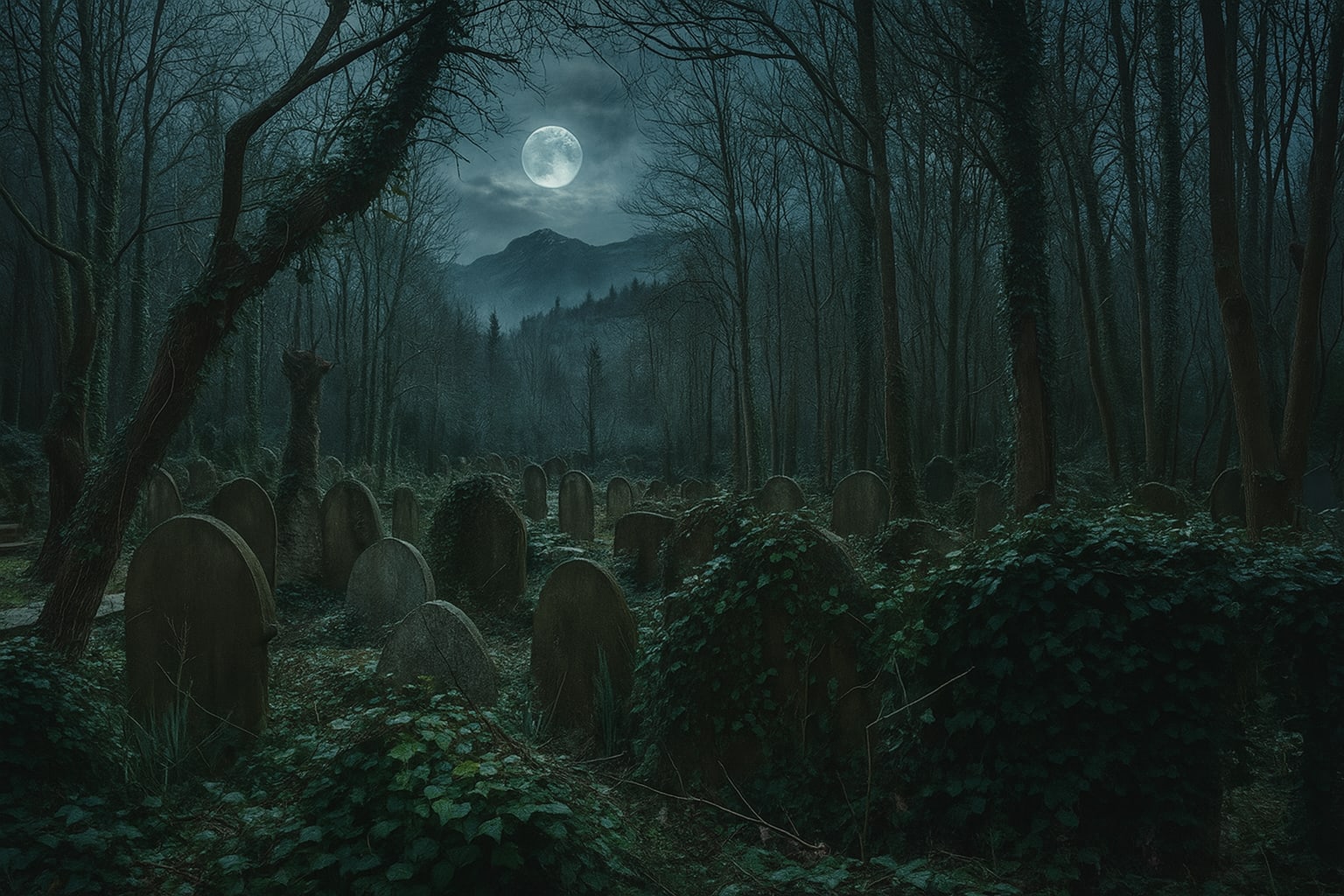Just off a quiet stretch of road near downtown Gatlinburg lies White Oak Flats Cemetery, one of the city's oldest and most overlooked landmarks. At first glance, it's easy to miss. Tucked into the hillside, surrounded by a low stone wall and shaded by trees that have seen more than a century pass, the cemetery doesn't demand your attention. But stay a moment — really look around — and something begins to settle in your chest. A heaviness. A stillness. A sense that you are not alone.
This isn't just a resting place. It's a place where the past lingers — and where, according to many, the dead aren't resting at all.
The Founders' Final Home
White Oak Flats Cemetery dates back to the early 1800s, a time when the area was still a rugged frontier. Before Gatlinburg had paved roads, trolley lines, and moonshine tastings, it was a tiny mountain community — and this cemetery was where many of the town's earliest settlers were laid to rest.
Here you'll find names like Ogle, Maples, McCarter — names that still echo through the town today. These were the families that cleared the land, built the first cabins, and shaped Gatlinburg's identity. Buried here are war veterans, children who never reached adulthood, and women who died in childbirth. And though many of the grave markers have worn down over time, the energy of what — and who — remains is hard to ignore.
Local historians believe there are dozens of unmarked graves scattered through the cemetery. In some spots, the ground dips unnaturally, or the stones lean in strange angles. The layout doesn't follow the neat, grid-like patterns you'll find in more modern cemeteries. It's haphazard. Wild. And maybe that's why it feels so alive.
The Woman in the Fog
White Oak Flats Cemetery is especially eerie in the early morning, when fog from the nearby river clings low to the ground. That's when some say you're most likely to encounter her — the figure of a woman, dressed in black, slowly walking between the headstones.
She's been seen dozens of times over the years, often by locals out for early walks or tourists who wandered too far off the main road. She never speaks. She never turns to face you. She just walks, vanishing when the fog begins to lift.
Some believe she's mourning a lost child — perhaps one of the many infants buried in the cemetery in the 1800s. Others think she's a widow, unable to move on. Theories vary, but the feeling she leaves behind is consistent: cold, sorrowful, and unsettling.
The Phantom Bell
For decades, locals have reported hearing the faint ringing of a bell late at night near the cemetery — always in the distance, never quite traceable. Some say it sounds like a small church bell, others describe it as a handbell, like the ones used to summon help or signal a funeral procession.
There is no bell tower nearby. No scheduled ringing. But the sound persists, especially on colder nights.
One theory is that the bell is connected to the spirit of a young boy buried near the front of the cemetery — a child who, according to legend, died of illness during a harsh winter in the mid-1800s. His grieving mother, overcome with sorrow, rang a handbell every evening at sunset for a week after his burial, hoping to call his spirit home. Some believe he never left.
Unseen Hands, Unexplained Chills
Many visitors have reported cold spots throughout the cemetery, even during Gatlinburg's muggy summers. These aren't subtle drops in temperature — they're abrupt, bone-deep chills that come and go without warning.
One man, visiting with his family, said he felt something brush against his hand as he walked past an overgrown grave. He assumed it was a branch or vine — until he realized there was nothing there. Just air.
Another visitor, a woman photographing the older headstones, claimed she felt a hand press gently against her back — not a shove, just enough to make her step forward. When she turned around, she was completely alone. She left shortly after.
There's a long-standing belief in the area that unmarked graves are especially active — that spirits tied to forgotten or lost identities are more likely to reach out. And with so many unknown burials scattered through White Oak Flats, it's no wonder so many visitors report something reaching back.
Shadow Figures and Flickering Lanterns
After dark, White Oak Flats Cemetery transforms into something else entirely. The shadows grow longer. The woods press in. And people who've dared to enter at night (despite it being off-limits) often describe figures moving between the stones, flickering lantern lights with no visible source, and the feeling of being followed.
One local ghost tour guide swears he saw a man standing under a tree at the back of the cemetery, staring at him in complete silence. The guide called out, thinking it was a hiker or local — but the figure didn't move. A moment later, it was gone.
Paranormal investigators have caught strange anomalies on film here — orbs of light, unexplained mists, and one audio recording that captured what sounded like a low male voice whispering, "Not yet."
No one knows what that meant.
A Cemetery That Refuses to Be Forgotten
White Oak Flats isn't just haunted because it's old. It's haunted because it's personal. These are the people who built Gatlinburg — who gave it its shape, its name, and its story. And maybe that's why their energy remains. Because in a town that now moves so fast, full of lights and attractions and distractions, this quiet, crumbling cemetery is a reminder of what came before.
And the dead, it seems, aren't quite ready to be left behind.
So if you visit White Oak Flats, do so with respect. Walk softly. Speak quietly. And don't be surprised if something watches you from the trees.
After all, in Gatlinburg — the dead are never far.

Weathered headstones mark the graves of Gatlinburg's founding families

The mass grave where Union and Confederate soldiers lie together


